SITUATIONER: The ‘how’ and ‘who’ of Peshawar Police Lines carnage
Brazen bombing shakes police force’s morale amid reports of security failure and intelligence lapse
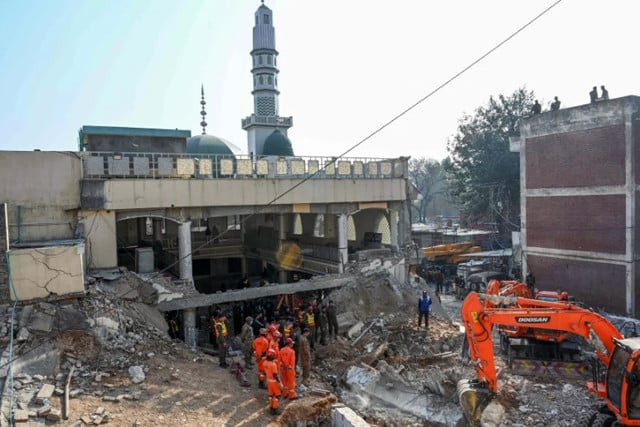
The senseless and wanton violence perpetrated by a suicide bomber at the Peshawar police headquarters mosque has resurrected the spectre of terrorism. The attack also raises fears that we are back to square one in the fight against an enemy that we believed to have been vanquished long ago. The targeted Police Lines is named after a senior police official, Malik Muhammad Saad Khan, who too was killed by a suicide bomber in 2007. It was one of the biggest mass-casualty attacks ever in Pakistan, the deadliest on police, and the bloodiest since the banned Tehreek-e-Taliban Pakistan publicly scrapped a ceasefire (which in effect never existed) in November last year. Nearly 100 lives, all but three policemen, were snuffed out by the bomber during noon prayers inside the mosque. The shockwaves from the explosion brought down the roof of the packed prayer hall, burying worshippers under the rubble. The attack happened more than a month after a bewildering TTP siege of a Counter-Terrorism Department compound in Bannu. Alarmingly, both the attacks took place inside highly-fortified areas. The CTD compound is located inside the Bannu garrison, while Police Lines is part of Peshawar’s Red Zone. The latest bombing has raised several questions.
First, how did the bomber manage to get inside the police headquarters, located in the heart of the Red Zone? Since the compound has only one entrance and the mosque is located at its far-end, the bomber might have walked/drove past the offices of senior police officials. If preliminary investigation is to be believed, the bomber carried 10-12 kilos of explosives in his suicide vest. The provincial police chief, Moazzam Jah Ansari, earlier said that the explosives might have been smuggled into the Police Lines in small quantities over a period of time and the suicide vest was prepared inside. This wasn’t possible without facilitation from the inside. Defence Minister Khawaja Asif has already raised this possibility. In the light of fresh leads, IG Ansari now says the bomber donned a police uniform, wore a helmet and a mask, and rode a motorcycle. He pulled up on the roadside near the entrance and asked a police guard to guide him to the mosque. This leads the investigators to believe the bomber was not familiar with the Police Lines and that he was given a target. The police guards at the gate didn’t check him believing he was one of them. But the question is if the bomber wore a suicide vest packed with explosives and ball bearings, then why the metal detector could not detect it? There is no denying that it was a massive security breach and intelligence lapse. A joint investigation team has already been formed. But will it get to the truth, fix responsibility, and heads will roll as a result? I doubt.
Also read: Peshawar mosque bomber identified, was in police uniform: IG K-P
Second, who could possibly be behind this sickening violence? The TTP was the first culprit that came to mind because it has carried out countless such attacks in the past. Omar Mukarram Khorasani, a member of TTP’s Central Shura, and Sarbakaf Mohmand, TTP’s shadow governor for Zhob, Balochistan, claimed responsibility for the attack, calling it the latest in a series of attacks to avenge the killing of Omar Khalid Khorasani, TTP’s deputy chief who died in a mysterious blast in the Paktika province of Afghanistan in August 2022. The group blamed Pakistan’s intelligence agencies for the killing of Khorasani, who had formed his own splinter group, called Jamaat-ul-Ahrar (JuA), in 2015, briefly swore allegiance to the Islamic State before returning to the TTP’s folds. Khorasani’s real name was Abdul Wali Mohmand and carried a $3 million US bounty on his head. He belonged to the Mohmand tribal district.
Later in the night, TTP’s official mouthorgan Muhammad Khorasani denied his group’s involvement, saying that attacks on mosques, seminaries, janazagahs, and other sacred places are strictly prohibited in TTP’s “code of conduct for combatants”. This leads us to three conclusions. One, there is a rift between Mufti Noor Wali Mehsud’s main TTP and the faction led by the Mohmand Taliban. Mehsud has reportedly suspended the membership of Sarbakaf Mohmand following his claim. Some reports suggest that differences have already come to the boil and that the Mohmand Taliban might break off again to revive the JuA. Two, the TTP, which is not a monolithic outfit, doesn’t have full control over its various components. Three, the contradictory statements could be a strategic ploy by the group to divide public opinion, or to distract, or to placate the Taliban regime which has been under increasing pressure from Islamabad to crack down on the TTP sanctuaries on Afghan soil.
Also read: Police personnel, families protest against Peshawar mosque horror
Third, the Police Lines attack came days after an undated audio clip of Taliban’s secretive supreme leader Mullah Haibatullah Akhundzada surfaced on social media in which he purportedly calls Pakistan’s constitution “un-Islamic” and says that Pakistan’s laws are British, hence the country cannot be called an “Islamic state”. The audio emerged after Mufti Taqi Usmani declared Pakistan an “Islamic state” and TTP’s armed struggle a “rebellion which needs to be quelled”. Mufti Usmani, who led a delegation of religious scholars to negotiate with the TTP in Kabul in 2022, also recalled that Mufti Noor Wali had agreed to give up violence against Pakistan. However, Mufti Noor Wali, also known by the nom de guerre Abu Mansour Asim, defended TTP’s terror campaign as a “jihad” in a riposte to Mufti Usmani citing a fatwa from more than 500 religious scholars and clerics during the Wana operation. “The government in Pakistan is neither Islamic nor sovereign. It is un-Islamic and a puppet of the US and other Western nations,” Wali said in his detailed rejoinder published in the latest edition of TTP’s magazine issued by Umar Media.
The stark similarity between the views of Mullah Haibatullah and Mufti Wali about Pakistan confirms that the TTP and Afghan Taliban are two sides of the same coin. Moreover, condemnations from the Taliban regime were also ambivalent. Afghanistan’s Embassy in Islamabad denounced it in a tweet as a “heinous terrorist attack” and offered prayers for the “martyrs”, but an official statement from the foreign ministry in Kabul called it an “explosion” and offered sympathies to the families of the “victims”. Taliban foreign minister Amir Khan Muttaqi preempted any formal finger-pointing at his country asking Pakistani officials to put their “own house in order instead of externalizing the problem.”
Also read: Police admit security breach as death toll soars past 100
Last, if the TTP has carried out this attack, irrespective of which faction, its sinister message was clear: we can hit your “protectors” inside their most fortified areas. The K-P police have been on the forefront in the fight against terrorists despite scarce resources, losing over 150 personnel in 2022 alone. But it has been subjected to politically-motivated criticism by federal government officials, especially in the wake of the CTD siege. This would have been highly demotivating for the force. But the latest brazen attack would have surely dented their morale, as it prompted unprecedented organic protests by its personnel across the province. Several video clips of these protests were shared on social media. Some of the slogans raised at these protests were ominous. These protests might be small and sporadic, but the fact that our first line of defense against terrorists starts losing confidence in the state is highly unsettling.
More unsettling is the disunity in our political elite as they shift responsibility at a time when they need to give up petty politics and unite against an enemy that seeks to capitalize on political polarization and economic morass to stage a deadly comeback.

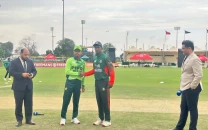
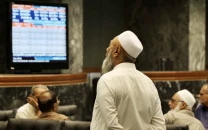
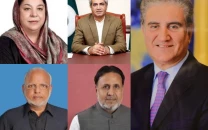
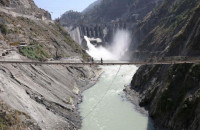
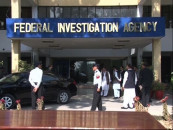
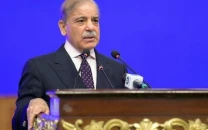












COMMENTS
Comments are moderated and generally will be posted if they are on-topic and not abusive.
For more information, please see our Comments FAQ